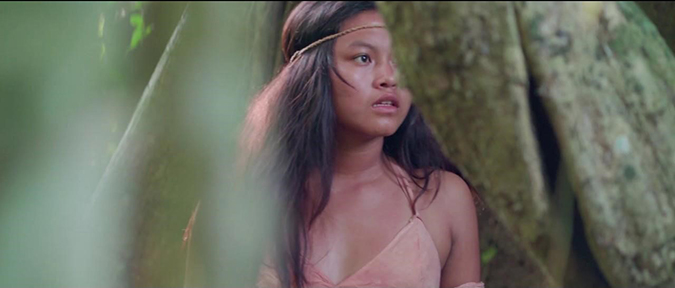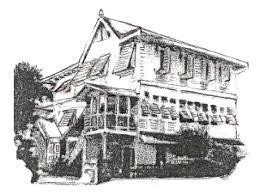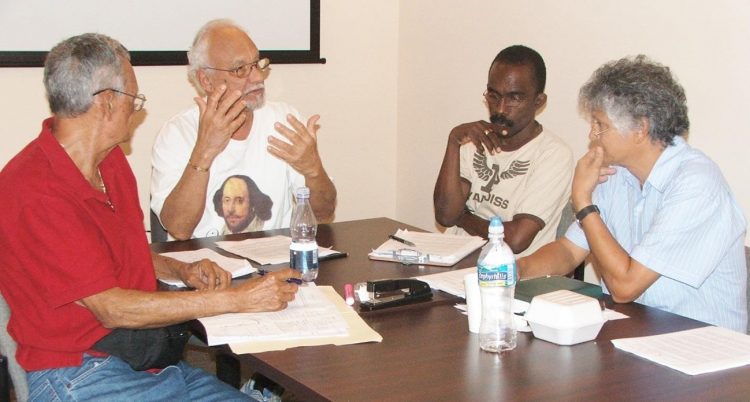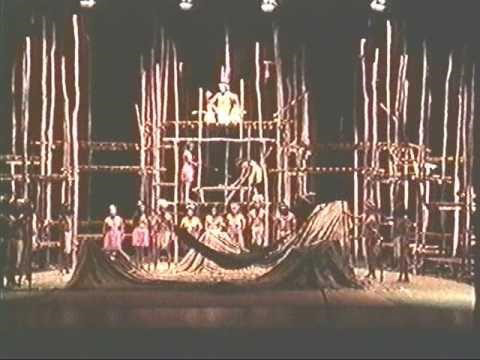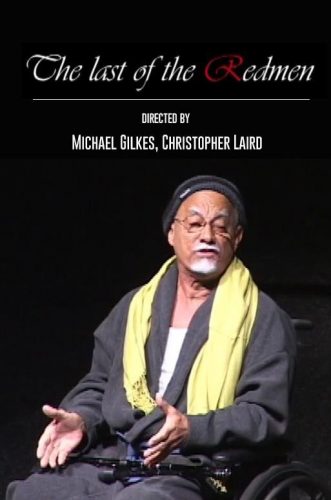By Ken Corsbie
As tributes to Michael Gilkes are written, I have been astonished at the volume and range of his work. His accumulated productivity over a lifetime as a poet, scholar, playwright, theatre practitioner and actor fills me with admiration and thanks for the time we had together and our more than 75 year close friendship. The artistic collaborations we shared was a small portion of the work Michael did, but highly significant to me and my own work in theatre. Michael is part of the small circle of close lifelong friends that form my “family”. Indeed, he is a cousin by marriage, but brother by choice.
My friendship with Michael Gilkes goes back more than 75 years at the almost mythical Taitt’s Yard at 294 Murray Street in Georgetown, Guyana. Michael was a cousin of the Taitts. By sheer chance, our backyard was through the paling and an alleyway into the Taitt’s yard. Every day at the Taitt’s house and yard was an opportunity to experiment with music, theatre, dance and all matter of sports. The boys in the Taitt’s yard fed off of each other’s energy and creativity and we learned to spark innovation and new ideas in one another. Without knowing it, we were forging lifelong artistic connections.
Taitt’s House, now Cara Lodge, Georgetown, Guyana
Over the years, I designed for several theatre projects with Michael. After initial thoughts about all the reasons why the idea was nearly impossible to bring to fruition, I was invariably recruited and enthusiastically embraced the project and began designing. We often began without funds, venue, backing or supportive systems necessary for success, and although I didn’t understand the logistics, somehow Michael made it happen. None of these projects would have happened if Michael waited for the resources, rather he was driven by ideas and an insatiable energy to make art happen.
From left are Ken Corsbie, Michael Gilkes, Eugene Williams, Director of Jamaica
School of Drama, and Henry Muttoo, Director of the Cayman Islands National Cultural Foundation (CNCF) discussing “Last of the Redmen” at CNCF in Grand Cayman 2010.
After young days in the Taitt’s yard, Michael went away to school and was gone to
England for a long time. It wasn’t until the late 1960’s, when I just came back from
3 years in drama school with all sorts of theatre design ideas and skills, that Michael approached me to be the stage and lighting designer for a production of Derek Walcott’s “Franklin.” The Theatre Guild building was under repair at the time, so we designed the set for outside the building in the backyard, a complete “backyard production.” The production was an unqualified success. This laid the foundation for our collaborations over the next several decades. The energy of the Taitt’s yard came back into the process in conjunction with Michael’s university education and my theatre background.
From then on, Michael and I worked on various theatre projects. He would have an idea for a production and then we would start to design. Around 1992 we worked together on a production of Michael’s “Couvade” on the huge Cultural Centre stage. The play and our theatrical approaches had matured into greater depths of acting, design and direction, and sheer concept. It was a major production using a concert stage, and he was able to recruit about 35 Amerindian actors and top Guyanese and Caribbean actors from overseas. At that time, the lights at the huge Cultural Centre stage had deteriorated, leaving only a few. Michael got the lights replaced through his own efforts, fundraising and expense in order to bring the lighting and set design to fruition. It was a magnificent production, documented on film by his US based son and daughter-in-law Mark and Barbara Gilkes.
Stage set for Couvade. National Cultural Centre, Georgetown, Guyana 1992
Outdoors integrated into a natural rainforest setting, Michael put together, designed, directed and produced “Ti-Jean and his Brothers” filmed in Welchman Hall Gully in Barbados, the only piece of natural rainforest left in the country.
Attempting to film on location in this way was innovative for the Caribbean 40 years ago.
The most daring project was to film “Wide Sargasso Sea” in Dominica using the locations described in the Jean Rhys novel. The filming included cooperation of Dominican authorities in taking down power lines for period authenticity, and help from the fire brigade in burning down a building for the film. Trinidad’s Banyan did the filming with a totally Caribbean cast from several islands.
“Remberance,” another Walcott play, was a project we collaborated on in Bermuda. Michael was the director and lead actor in a role for which he was well-suited. I designed the set in New York, building a scale model and mailed it to the crew to build the set. I then travelled to Bermuda to oversee the final design and lighting. The production came off well. Derek Walcott was at the opening and gave the production his endorsement.
In many ways the “Last of the Redman,” written, designed and directed, and acted by Michael, was his most audacious theatre project. This play is a “singlehanded” play lasting for nearly two hours. Although the central character was based on Clairmonte Taitt, one of the Taitt’s boys and an accomplished actor, and Michael envisioned Clairmonte acting the part, the prospect of performing a two hour single handed play was daunting. Michael then turned to me and at the age of 77, I hadn’t acted a play in many years. I said “not me”, and Michael ended up learning all of those lines and acting the part himself. The play was first performed in the Taitt’s yard drawing room, the location that inspired the script. It was also performed in Toronto, Trinidad, Barbados, The Cayman Islands and St. Lucia. I adapted the set design in Toronto and Barbados to suit the theatre space. In many ways “Redman” was a story of us from the Taitt’s yard and the social, cultural and political changes experienced over more than seven decades. It is the story of how our artistic lives were fostered and intertwined. As a semi-biographical piece, this play lays out inter-workings of Guyanese society moving from
colonialism to independence, and what was gained and what was lost.
A poster for a production of Michael Gilkes’ “Last of the Redmen” in Trinidad
His concluding work, “Maira and the Jaguar People”, is a film on location with the Makushi people in Surama. Maira must now be completed and screened to complete his journey. I hope that this will happen as a final tribute to Michael and in celebration of riches of his imagination, shared with us throughout his life.
Michael’s theatrical work involved the best of Caribbean theatre practitioners: producers, directors, designers, and actors. He dared to bring in Caribbean actors from everywhere and he was able to get them to come from other places with not much more than the promise of being part of an innovative, artistic and unique Michael Gilkes production. They came to work with him.
A few months ago, I received an email from Michael about the long suffering of bringing Maira to conclusion. He had also started to write a musical play, “Stabroek,” with music composed by Hugh Sam, for the newly renovated market and put up an idea that we work on it together… me, Ken Corsbie, at the age of 89, having suffered a stroke and dealing with language-robbing aphasia, I was nevertheless captivated by a Michael Gilkes idea and contemplated another design for an innovative MICHAEL GILKES SHOW.
Sleep couvade and dream your dreams…
